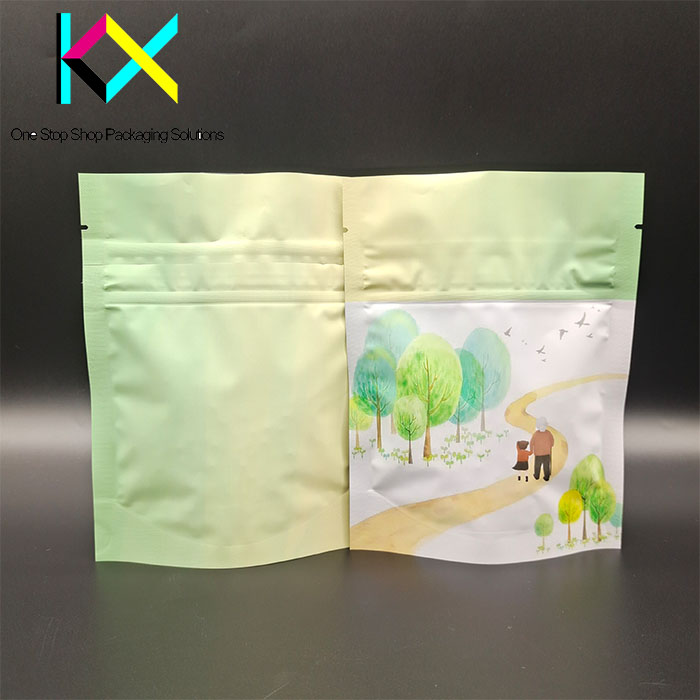Noodle Packaging Bag: What Material is Both Durable and Moisture-Resistant?
Noodles are a staple food item worldwide, enjoyed in various forms, from pasta to ramen. But noodle packaging presents unique challenges: it must be durable to protect against damage during transport and storage, and it must resist moisture to maintain the noodles’ freshness and quality. To address these needs, packaging solutions have evolved to include innovative materials that are not only practical but also sustainable. One of the key enablers of these innovations is digital printing technology, which provides unique advantages in terms of customization, sustainability, and cost-effectiveness for noodle packaging.




The Key Challenges in Noodle Packaging
Noodles are highly sensitive to moisture, and even a small amount of exposure can compromise their texture and quality. Therefore, packaging materials must be moisture-resistant to prevent humidity from seeping in. At the same time, noodle packaging must be sturdy enough to withstand the rigors of transportation and stacking on shelves. Traditional plastic packaging has been widely used for these purposes, but due to environmental concerns, there is growing demand for eco-friendly alternatives that do not compromise on durability or moisture resistance.
Material Options for Moisture-Resistant and Durable Packaging
In recent years, several types of materials have emerged as suitable options for noodle packaging, each with its advantages and compatibility with digital printing technology:
Polyethylene (PE) and Polypropylene (PP) Films: These materials are commonly used in noodle packaging because they are strong, lightweight, and offer excellent moisture resistance. Polyethylene and polypropylene films are also highly compatible with digital printing, allowing for high-quality branding and visuals on the package. However, they are not biodegradable, which is a consideration for brands looking to adopt more sustainable options.
Biodegradable Polymers (e.g., PLA and PHA): As environmentally friendly alternatives, biodegradable polymers like polylactic acid (PLA) and polyhydroxyalkanoates (PHA) have gained popularity in food packaging. These materials provide moisture resistance and can be composted under industrial conditions. However, they can be less durable than traditional plastics, which can be a drawback in some applications. Digital printing can be used to create vibrant designs on these materials, offering an eco-friendly way to achieve attractive branding.
Kraft Paper with Bio-Coating: Kraft paper is a sustainable packaging option that, when paired with a moisture-resistant bio-coating, provides sufficient protection for noodles. Although not as inherently moisture-resistant as plastic, the bio-coating can improve its protective qualities, making it a suitable alternative. Digital printing on kraft paper is highly effective, offering a rustic, eco-friendly aesthetic that appeals to many consumers interested in sustainable packaging.
Multi-Layer Laminates: Multi-layer laminates combine layers of materials like plastic, aluminum, and paper, offering excellent moisture resistance and durability. For instance, a layer of aluminum can block moisture while a plastic outer layer provides durability. However, recycling multi-layer materials can be challenging. Digital printing allows for seamless printing on these laminates, creating an eye-catching, high-quality finish that enhances the product’s shelf appeal.




The Role of Digital Printing Technology in Noodle Packaging
Digital printing is transforming the noodle packaging industry by enabling flexible, cost-effective solutions that meet both aesthetic and functional needs. Here’s how digital printing addresses the unique demands of durable, moisture-resistant noodle packaging:
Customization and Personalization: Digital printing allows for endless customization. Noodle brands can experiment with different designs, add QR codes for product information or traceability, and even create seasonal packaging with ease. This flexibility allows for shorter print runs, making it feasible to produce small batches or limited editions that cater to specific market segments or promotional campaigns.
Eco-Friendly Printing Solutions: Digital printing supports sustainability by reducing waste and enabling the use of eco-friendly inks. Unlike traditional printing, which often requires plates and creates a large amount of waste, digital printing prints directly on the material, minimizing excess and allowing for precision. Additionally, digital printing is compatible with biodegradable materials, supporting the production of fully sustainable packaging that does not compromise on quality or durability.
Enhanced Print Quality and Durability: Digital printing produces high-definition images and sharp details, enhancing the visual appeal of noodle packaging. The technology also enables special finishes, such as matte or gloss effects, which can protect the surface of the packaging against scratches and scuffs. This additional layer of durability helps ensure that packaging stays intact and visually appealing from production to consumer use.
Reduced Costs and Faster Turnaround: Traditional printing methods can be costly and time-consuming due to the setup required. Digital printing eliminates the need for plates and other materials, reducing both costs and production times. This efficiency enables noodle brands to respond quickly to market trends, create new designs as needed, and get their products to market faster.


Conclusion
For noodle packaging, finding a material that balances durability and moisture resistance is essential to preserving product quality. From biodegradable polymers to multi-layer laminates, modern materials offer diverse solutions that cater to different needs. Digital printing technology complements these materials by providing flexibility in design, supporting sustainability, and enhancing durability. By leveraging digital printing, noodle brands can achieve packaging that not only protects their products but also conveys their brand identity in a visually appealing, sustainable manner.
You can visit our website to know more about our flexible packaging pouch:
